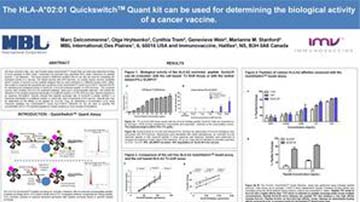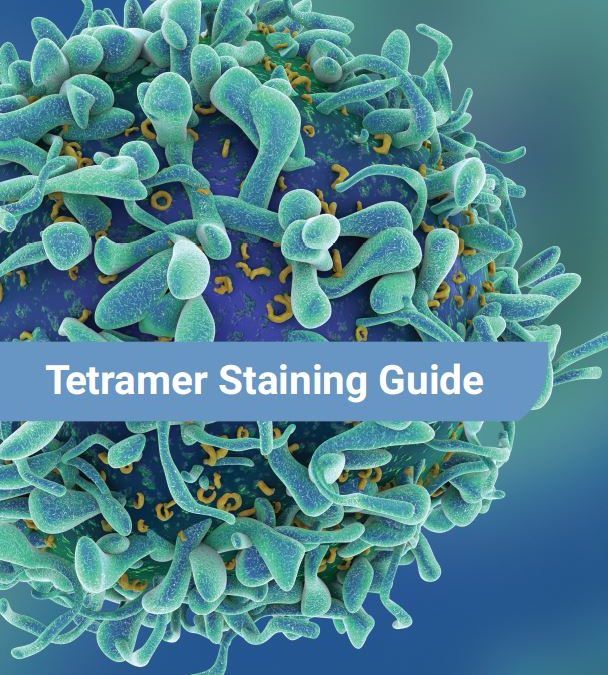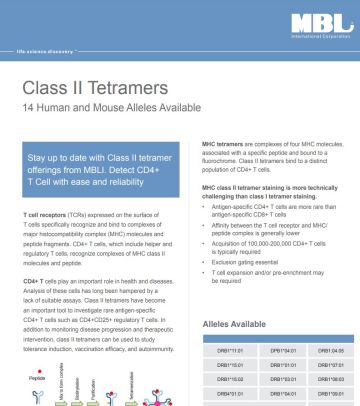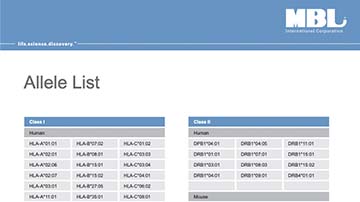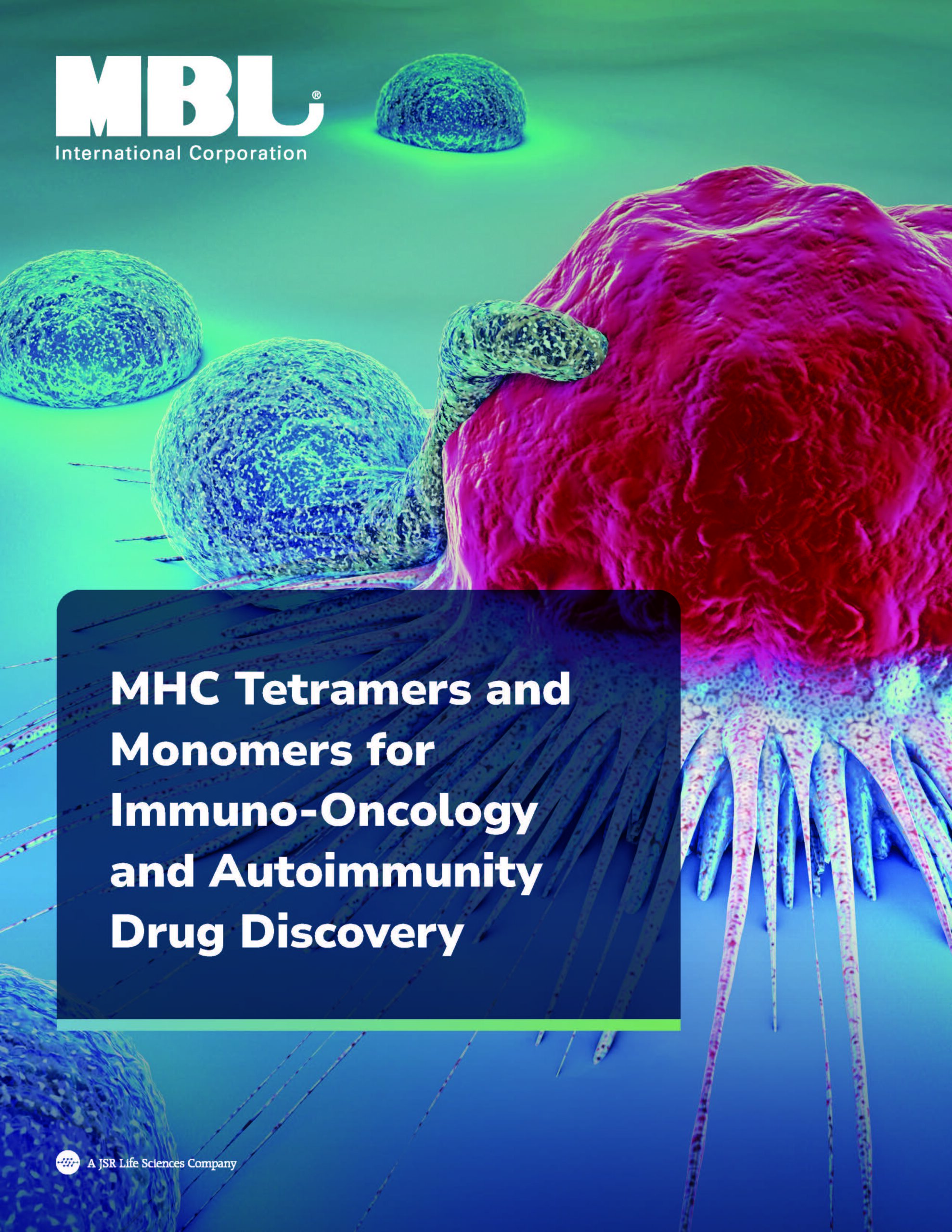T-Select Human CD1d Tetramer-SA-PE
The α3 mutation significantly reduces the binding of MHC tetramer to human CD8. To minimizes the aberrant effect of some CD8 antibodies; clone SFCI21Thy2D3 (also known as “T8”) is recommended.
| Target | NKT cells |
|---|---|
| Product Type | Tetramer |
| Application | FCM |
| Conjugate | PE |
| Class | CD1d |
| Species Reactivity | Human |
| Allele | CD1d |
| Research Area | Immunology, Immune Monitoring |
| Protocols | FCM |
| Specificity | NKT cells |
| Formulation | The reagent is dissolved in aqueous buffer that contains 10 mM Tris-HCl (pH 8.0), 150 mM NaCl, 0.5 mM EDTA, 0.2% BSA and 0.09% NaN3. *Azide may react with copper or lead in plumbing system to form explosive metal azides. Therefore, always flush plenty of water when disposing materials containing azide into drain. |
| Description/Background | Natural Killer T (NKT) cells, a type of T cell that plays a significant role in immune response, produces a large quantity of INF- and IL-4 in response to glycolipids that presented by CD1d molecules. In recent years, NKT cells are reported to play a part in diabetes and tumor immunity. Therefore, a technology allowing quantitative measurement of CD1d-positive NKT cells would be a useful tool for immunology and clinical laboratory examinations. The development of MHC Tetramer technology has provided a breakthrough in the ability to follow T cell populations defined by their antigen specificity. Tetramers have been used widely to obtain a detailed analysis of the distribution and frequency of conventional CD4+ and CD8+ antigen-specific T cells during a variety of immune responses. T-Select Human CD1d Tetramer is a reagent created by tetramerizing biotinylated human CD1d/2m complexes with streptavidin labeled phycobiliprotein. -galactosylceramide (-GalCer), a glycosphingolipid originally isolated from marine sponges, appears to be presented by CD1d to activate both human and mouse NKT cells. -GalCer loaded T-Select Human CD1d Tetramer is a highly specific reagent for detection of NKT cells. Measurement can be performed using isolated lymphocytes/monocytes. |
| Storage Temperature | Store protected from light at 2-8ºC. Do not freeze. |
| Regulatory Statement | For Research Use Only. Not for use in diagnostic procedures. |
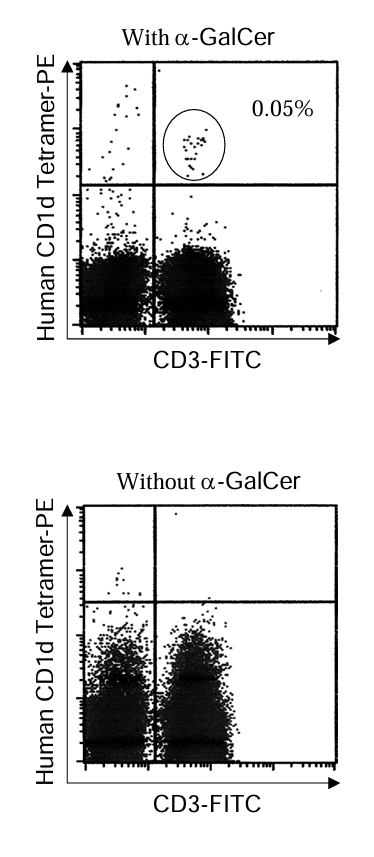
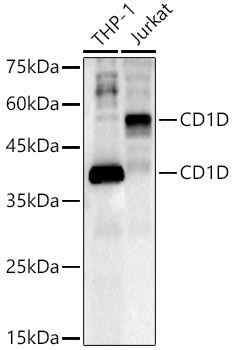
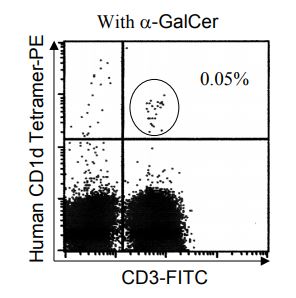
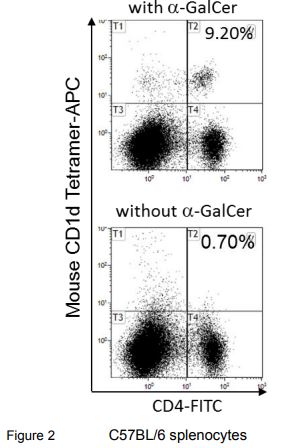


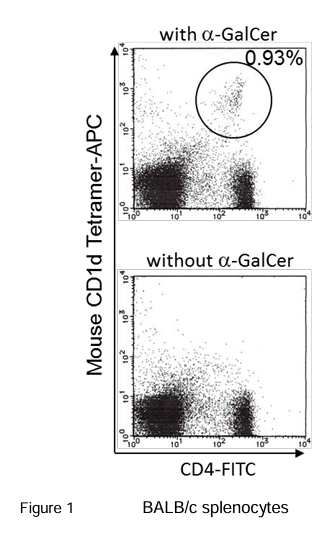
![Brochure: Knockout Antibodies [KO] validation](https://products.mblintl.com/wp-content/uploads/2024/07/Knock-out-Antibodies-Flyer-Image-610x675-1.jpg)
